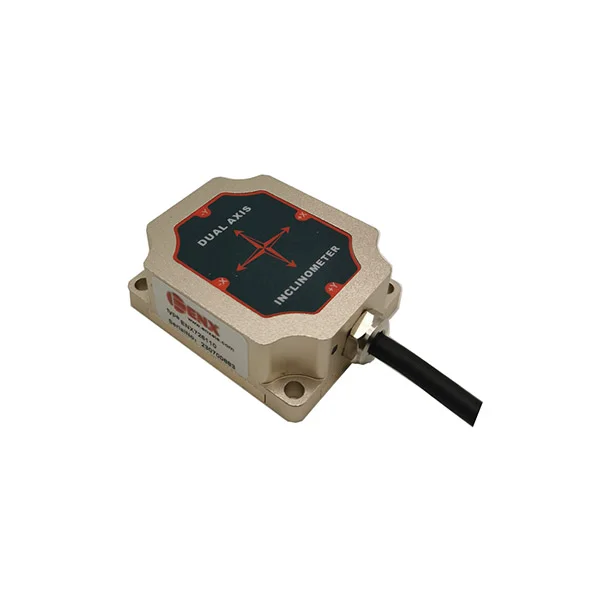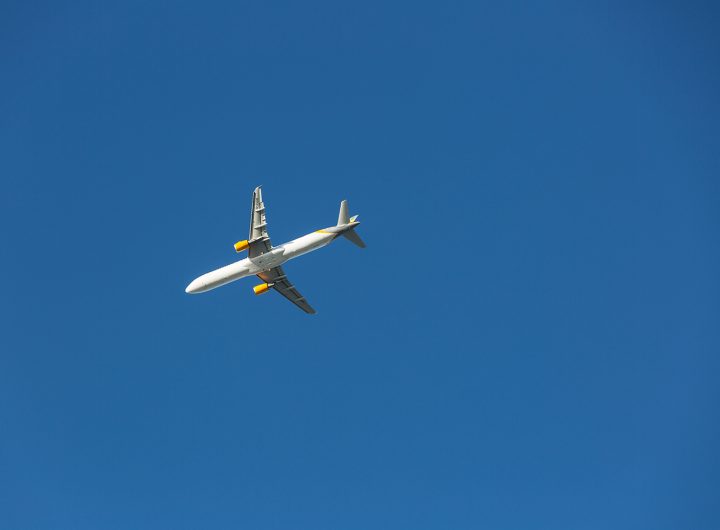- This topic is empty.
-
AuthorPosts
-
11/07/2025 at 15:37 #7444
In the rapidly evolving field of industrial automation, precision, reliability, and real-time feedback are critical factors that govern the efficiency and safety of modern machinery. Among the many sensing technologies that have been developed to meet these demands, inclinometer tilt sensors have emerged as essential components in a broad array of applications. These sensors provide accurate angular measurements relative to gravity, enabling the control systems of industrial automation equipment to perform critical tasks such as position correction, level monitoring, alignment, and dynamic tilt compensation. In this blog post, ENX Enxiao will share the application of high performance inclinometer tilt sensor in industrial automation equipment.
What Is Inclinometer Tilt Sensor?
An inclinometer, also known as a tilt sensor or tilt meter, is a device used to measure angles of slope (tilt), elevation, or depression of an object with respect to gravity. These sensors typically utilize MEMS (Micro-Electro-Mechanical Systems) technology or electrolytic/pendulum-based mechanisms to detect inclination. The output can be analog or digital and is often used in conjunction with programmable logic controllers (PLCs), microcontrollers, or industrial computers.
The key performance metrics of an inclinometer include:
* Angular range (e.g., ±90°, ±180°)
* Resolution (as low as 0.001°)
* Accuracy (commonly within ±0.1° to ±0.01°)
* Response time and update rate
* Temperature stability
* Shock and vibration resistance
Integration of Inclinometer Tilt Sensors in Industrial Systems
The integration of inclinometer sensors into industrial automation equipment typically involves:
* Mounting the sensor rigidly on a moving or tilting structure
* Connecting the sensor to a control system via analog (voltage/current) or digital (RS-485, Modbus, CAN, etc.) interfaces
* Calibrating the system to compensate for any initial offset or mounting misalignment
* Programming the control logic to respond to tilt values, e.g., initiating an actuator, issuing a safety warning, or correcting position
Advanced models support features like:
* Dual-axis measurement (pitch and roll)
* Built-in filters for noise reduction
* Zeroing functions
* Integrated temperature compensation

Application Scenarios in Industrial Automation
1. Robotic Arm Positioning and Balancing
In multi-axis robotic arms, accurate tilt sensing is essential to maintain proper orientation of the end-effector. Inclinometers assist in real-time monitoring of arm segments to:
* Prevent mechanical overreach or collision
* Maintain horizontal levels during delicate operations like laser cutting, welding, or pick-and-place
* Provide closed-loop feedback for adaptive motion control
Using high-resolution tilt sensors allows robots to function with greater spatial awareness, especially in applications where precise angular positioning is more relevant than linear displacement.
2. Automated Guided Vehicles (AGVs) and Mobile Robots
Mobile platforms used in warehousing and smart factories frequently encounter uneven terrain, ramps, or inclined surfaces. Integrating inclinometers enables these vehicles to:
* Detect dangerous slopes and avoid tipping
* Adjust driving parameters (e.g., speed or center of gravity) in real time
* Stabilize cargo loads to prevent spillage or misalignment
Some AGVs use dual-axis tilt sensors to simultaneously monitor roll and pitch during transit, improving both safety and task execution.
3. Machine Tool Calibration and Alignment
High-precision manufacturing equipment such as CNC machines, lathes, or coordinate measuring machines (CMMs) require exact alignment to achieve micron-level tolerances. Inclinometers support:
* Leveling of machine beds during installation
* Continuous monitoring of machine tilt due to floor settlement or mechanical wear
* Automatic compensation for thermal expansion-induced deviations
Tilt sensors can be permanently installed or used as portable tools during periodic machine audits.
4. Construction Automation Equipment
Automation in heavy construction equipment such as cranes, excavators, and pile drivers increasingly depends on sensor feedback. Inclinometers contribute to:
* Real-time boom tilt angle detection for cranes to avoid tip-overs
* Blade or bucket tilt monitoring for graders and excavators
* Ensuring perpendicularity in automated drilling and piling rigs
In harsh outdoor environments, robust inclinometer sensors with IP67 or IP69K ratings are preferred due to their water, dust, and vibration resistance.
5. Wind Turbine Blade Pitch Control
In renewable energy systems, inclinometers are installed within nacelles or on individual blades of wind turbines. Their role includes:
* Monitoring yaw and pitch angles for optimal wind alignment
* Detecting structural shifts or mechanical loosening over time
* Supporting emergency shutdown protocols in extreme wind conditions
Integration with SCADA systems enables remote diagnostics and predictive maintenance.
6. Automated Material Handling Systems
Industrial conveyor systems, stackers, and automated shelving systems benefit from inclinometer feedback for:
* Monitoring conveyor belt tilt to detect structural misalignment
* Managing elevation changes in telescopic or scissor lifts
* Ensuring accurate vertical positioning in automated storage and retrieval systems (AS/RS)
By using inclinometer data, these systems can optimize throughput and minimize mechanical stress on actuators.
Benefits of Using Inclinometers in Automation
a. Non-Contact Measurement
Inclinometers provide non-contact angle detection, which eliminates mechanical wear and increases sensor longevity.
b. Real-Time Monitoring
The rapid response time of MEMS-based inclinometers supports real-time monitoring and control, essential for high-speed automation tasks.
c. High Reliability and Low Drift
Modern tilt sensors are designed with internal compensation algorithms, maintaining accuracy across wide temperature ranges and reducing signal drift over time.
d. Compact and Easy to Install
Due to their small size and minimal wiring needs, inclinometers are easy to retrofit into existing systems without major design modifications.
e. Energy Efficient
MEMS inclinometers consume very little power, making them suitable for battery-powered mobile applications and remote installations.
Considerations for Selection
When selecting an inclinometer tilt sensor for industrial automation applications, engineers should evaluate:
* Axis of measurement (single vs. dual-axis)
* Measurement range and resolution requirements
* Environmental conditions (vibration, temperature, moisture)
* Interface compatibility with existing control hardware
* Mounting method and physical constraints
* Certifications (e.g., CE, RoHS, ATEX for hazardous zones)
Additionally, consideration should be given to long-term reliability, vendor support, and diagnostic capabilities provided by the sensor firmware.
Conclusion
Inclinometer tilt sensors are foundational elements in the infrastructure of modern industrial automation. Their precise angular measurements enable systems to make real-time decisions that ensure operational accuracy, safety, and efficiency across a broad spectrum of industries — from robotics and AGVs to construction equipment and renewable energy platforms.
As manufacturing becomes increasingly digitized and automated, the demand for robust, high-precision, and intelligent sensing solutions will continue to grow. Inclinometers, with their versatility and evolving technological capabilities, are poised to play a central role in shaping the smart factories and autonomous systems of tomorrow.
http://www.enxsensors.com
ENX Enxiao -
AuthorPosts
- You must be logged in to reply to this topic.

 Google hit with record EU fine over Shopping service
Google hit with record EU fine over Shopping service  Business booming for giant cargo planes
Business booming for giant cargo planes  Trump-Putin: The understandable story
Trump-Putin: The understandable story